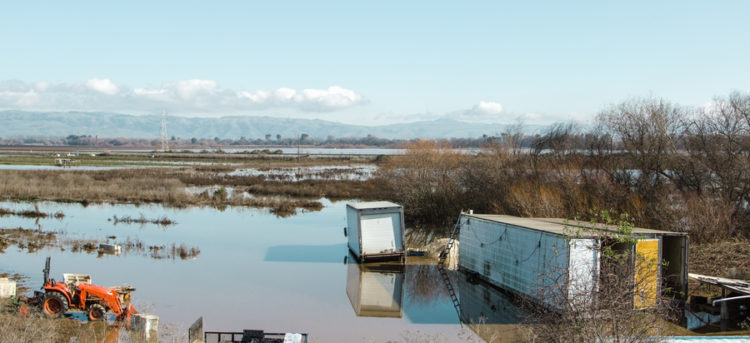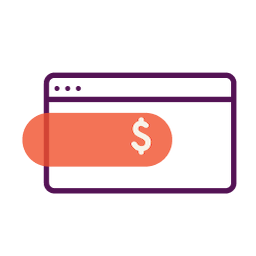Advertiser & Editorial Disclosure
If there is one important lesson business owners learn early and often, it is that there will always be setbacks. The recent devastation from Hurricane Harvey is one example of how these setbacks can rarely be avoided. You can prepare for them, however, by considering resources designed to get your company back on track. One of the most respected assistance programs is administered by the SBA.
Am I Eligible?
The Small Business Administration has been giving business owners a helping hand since 1958, and they offer several financial programs specifically for those suffering losses from a declared disaster. What kind of disaster qualifies? The SBA keeps an updated list of all eligible disaster areas in its database, where you will find Presidential and SBA agency declared disasters, as well as those declared by the Agriculture Department. Events most often covered include flooding, drought, and tropical storms.
It is important to remember that you need to be affected by a disaster to begin the process of applying for help. It may take time for the website to be updated, and not all disasters will qualify. (A quick check on the government’s Disaster Assistance address tool will let you know.) If you feel that your disaster should be covered – but isn’t – you can contact local officials to see if they have started the process for disaster declaration. The approval can be long, and may not always go your way. You can also try petitioning the White House directly for disaster approval through the Federal Emergency Management Agency (FEMA).
What Expenses Are Covered?
Once your specific disaster has been listed on the site, you can start the process of getting help for your business. The loans issued by the SBA are to be used for business-related expenses with one exception — there is a disaster loan option for homeowners and renters (no business holdings required) that caps at $200,000. There is also a program available to help with times of economic loss for businesses. Businesses who were unable to pay bills or meet financial obligations may qualify for working capital (Economic Injury Disaster Loans) to help get you through until your business is up and running again.
The funds from an SBA loan are to be used to pay for uninsured damages to your business and company property. That doesn’t mean that it can’t be used for insured items, however. If you need to improve your repaired or replaced property to avoid future damages, you can usually get 20% more than original value cost with a loan. You can also use loan proceeds to cover outstanding mortgage payments for damaged, insured property.
How Do I Apply?
You should immediately apply for assistance once you know that you are eligible for funds. Business owners can start the application at the SBA website, which is the fastest way to receive a determination. A business of any size (including agricultural co-ops and private nonprofits) can apply for up to $2 million in loans for economic loss; businesses may also apply for up to $2 million in physical damages. Both loans cannot exceed the maximum of $2 million in total funding.
You’ll need the following items to fill out your application:
- Business’s legal name, ownership details (including SSNs for owners), address and contact information
- Documentation of type and scope of damages
- Tax filing records
- Profit and loss statements
- Listings of assets and depreciation records
There may be additional items requested that are specific to your business type or situation. You may also be asked for more in-depth records for any of the above at any point in the loan application. For easy access during clean-up and recovery, it is recommended that you keep digital copies of pertinent records on hand to assist with application needs.
When Will I Get Approval?
Not everyone who applies will be given a loan, and the process takes some time to go through the appropriate channels. During your loan review, the SBA will check your business credit history, and potentially your personal credit history, to see if you are a good risk for the loan. (You can check your personal and business credit scores for free on Nav.) They will require any principals of the business to personally guarantee the loan — that means if you default, your personal credit scores could be at risk. They will also inspect the business property to estimate the value of damages. After insurance coverage and applicant’s eligibility are reviewed, a loan offer will be made to qualified business owners within 2-3 weeks from the application date. (Insurance review and payments do not have to be finalized for the loan to proceed.)
When Will I Get Funds?
Once you have been approved for a loan, and sign the required documents, an initial disbursement can be made within five days. This first payment can range from $14,000 to $25,000 and will depend on the total loan amount and type of disaster declaration made for the covered area. A loan officer will also be assigned to help the business owner get access to the remaining loan amount, including adjustments made for unexpected additional damages that may need to be covered.
Don’t Delay in Asking for Help
Affected businesses from Hurricane Harvey (or any other declared disaster) should take action right away to get help from the SBA. Each declared disaster will have a filing deadline in which all applications for assistance must meet. This is usually 60 days from declaration for physical damages and nine months for economic damages. These deadlines may be extended at the agency’s discretion.
It is very important for business owners to do all that they can to mitigate loss to their businesses before a disaster hits. The Small Business Administration has a helpful reference guide for these preparations. If the event is unexpected, however, or you can’t prevent loss, it’s good to know that they are standing by to help.
This article was originally written on August 28, 2017 and updated on November 12, 2020.


I too jumped through hoop after hoop, only to end up nowhere. My insurance company found a loophole to weasel out of most of the damage costs which left me having to cover tens of thousands of dollars out of pocket, no roof and more damage done the house with each rain. I went to SBA and did everything they would ask and each time they would move the goalpost and contradict what I had been told previously and just change the rules and requirements. At last contact, summer of 2018 they finally said they would not approve due to my DTI. f course, the way they were calculating my DTI was adding back in expenses already accounted for in my tax return, essentially ‘double-dipping’ the expenses, which is incorrect accounting. He didnt seem to understand the tax return or how debt to income is calculated. I went ahead and spent the last few months just paying off everything to make sure they dont have any math to confuse them but now I am being told the time limit has ran out and I am just screwed. Is there anything I can do?
Sam, I’m so sorry to hear what you’ve been through. Have you talked to your Small Business Development Center (SBDC)?
Hello, my name is chase. I’ve taken the sba loan and done everything thay’ve asked me to do as far as sending receipts and showing proof. The 2nd inspector that came to my house and now is saying that I basically don’t need the last 20000 of my loan I was approved and put a lien on my 250000 house. I need just the last bit and that should finish my house. What can I do?
We applied for an SBA Loan in September 2017 after our house was flooded due to Hurricane Harvey, Loan Application No. 1000545204. We received a denial letter dated October 5, 2017. The reason was for outstanding amounts owed to the IRS. The letter stated we had a right to request reconsideration if, among other reasons, the Taxes have been paid in full or a “valid” IRS Installment Agreement is in place.
We had an installment agreement but had no idea how to obtain a “valid” copy of this agreement.
The Taxes have now been paid.
Is it too late to be reconsidered for a loan? We had no flood insurance, and we also had 2 contractor estimates for repairs only (not furniture or appliance replacements) which were both in the $60k+ amounts. We are still a long ways from getting our house back in order.